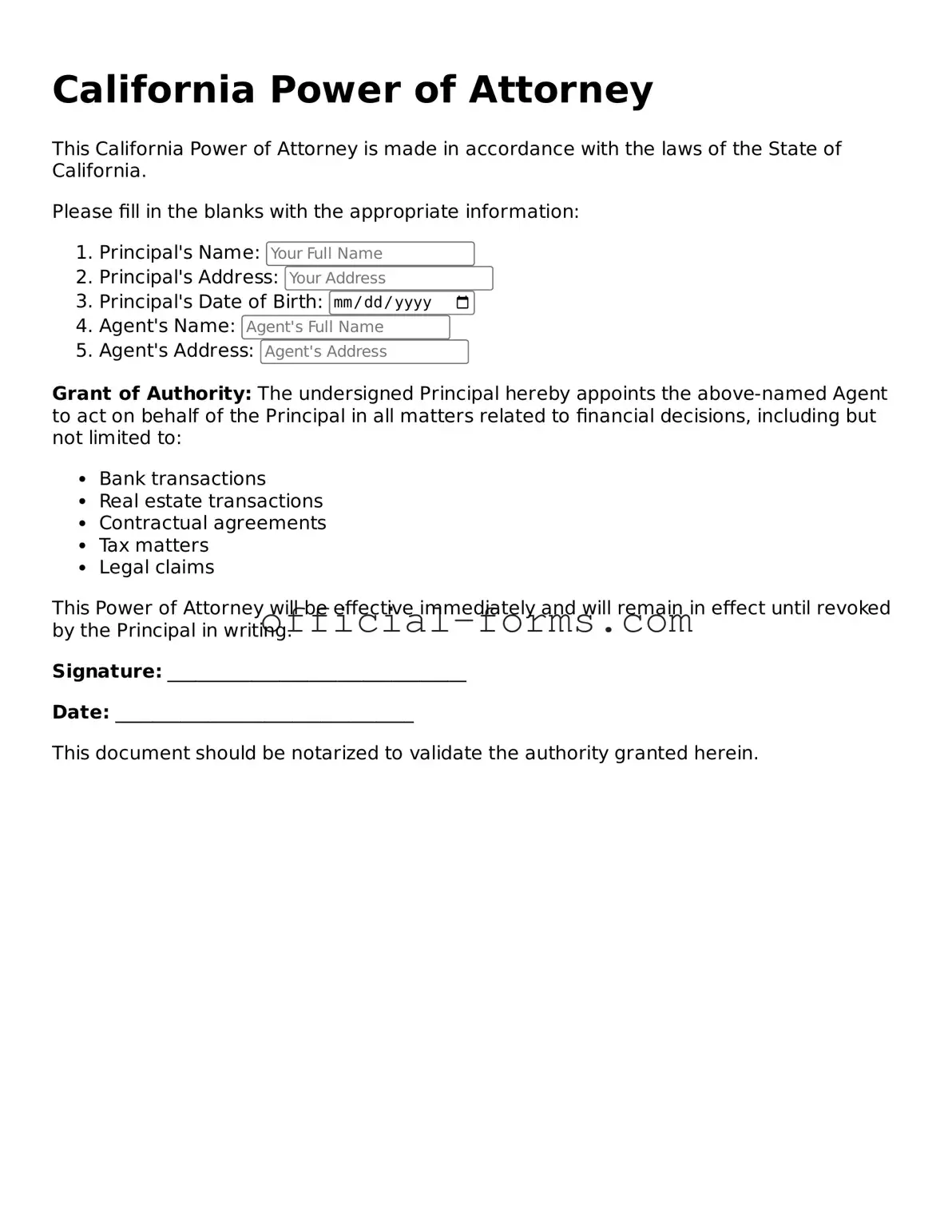Official California Power of Attorney Document
The California Power of Attorney form is a legal document that allows an individual to designate another person to make decisions on their behalf, particularly in financial or medical matters. This arrangement can provide peace of mind, ensuring that someone trusted will manage important affairs if one becomes unable to do so. Understanding the specifics of this form is essential for anyone considering this important step in planning for the future.
Open My Power of Attorney Now
